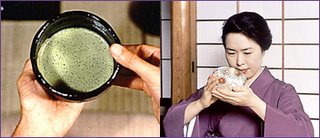
As an ardent traveler, it has been a pleasure to observe the various customs and traditions of the countries I’ve visited. So many times, a traveler may inadvertently offend a person in a host country without ever realizing they have done so – a problem I intentionally tried to avoid on a recent trip to Japan.
Originally from England, I am a tea lover, and, as most people know, we Brits take our tea drinking seriously. On my first visit to Japan, I decided to attend a formal, tea ceremony having always wondered if there was a “proper” way to serve tea, and so set off to the nearest teahouse. I was part of a group of six people, who were led through a garden and into a teahouse. The host took considerable time in preparing the tea and handed it to us in tiny cups without handles. The host used both hands as she handed the cups to each of us. In each instance, she turned the cups so that the design on the front of the cup was facing the recipient. We were told it was customary to accept the cup in both hands, and then turn the cup around so the design now faced the host. This ritual had to be observed before drinking the tea; to not do so would have been unacceptable behavior.
A similarly important ritual exists for distribution of business cards in Japan. I have been at meetings in America and England where people have handed business cards around the table like a croupier at a Blackjack table. Not so in Japan where one offers a business card with two hands and a slight nod of the head. The card is accepted using both hands. After all, it is a precious item and not to be offered or accepted without ceremony.
I believe the best way to see a country and meet the people is to travel they way they do, so I took a trip on the Tokyo underground train system. Of course, all destinations were written in Japanese and since I do not speak Japanese, I had to enlist the help of fellow passengers. I was surprised and delighted to note that many people spoke English. Once asked, they took the time to find out where I was going and point that destination out on the map, help me purchase a ticket from the automated machines, and direct me to the trains. By the way, there is no mistaking the direction to the trains as there are literally official footprint markings leading to and from the platforms on the underground. I noticed that everyone, without exception, followed the footsteps in an orderly fashion. Needless to say, I followed suit, and was pleasantly surprised to see how clean the trains were and how everyone boarded and exited the trains. The whole process of traveling on the underground Tokyo transit system was a real experience and one that I recommend other visitors.

